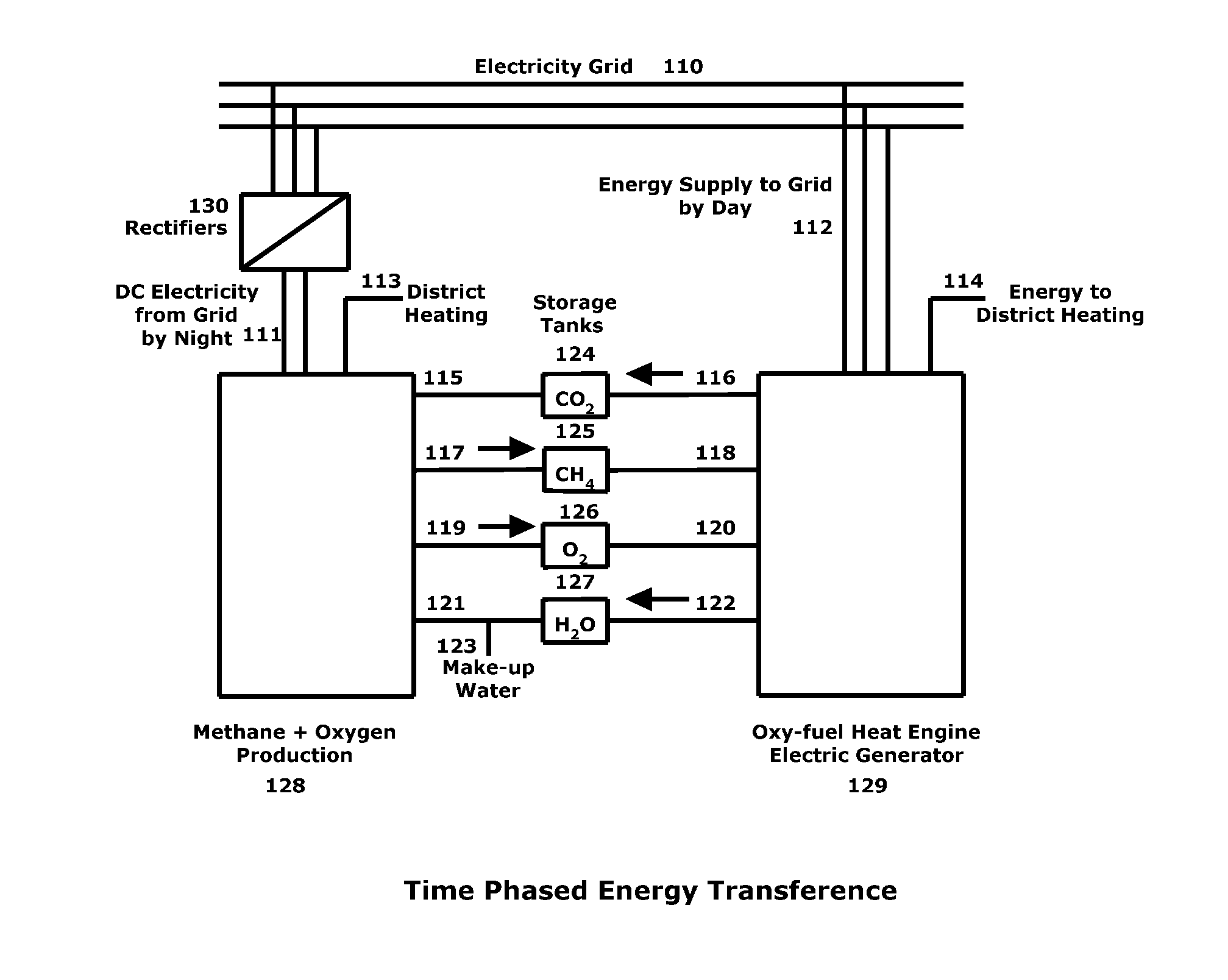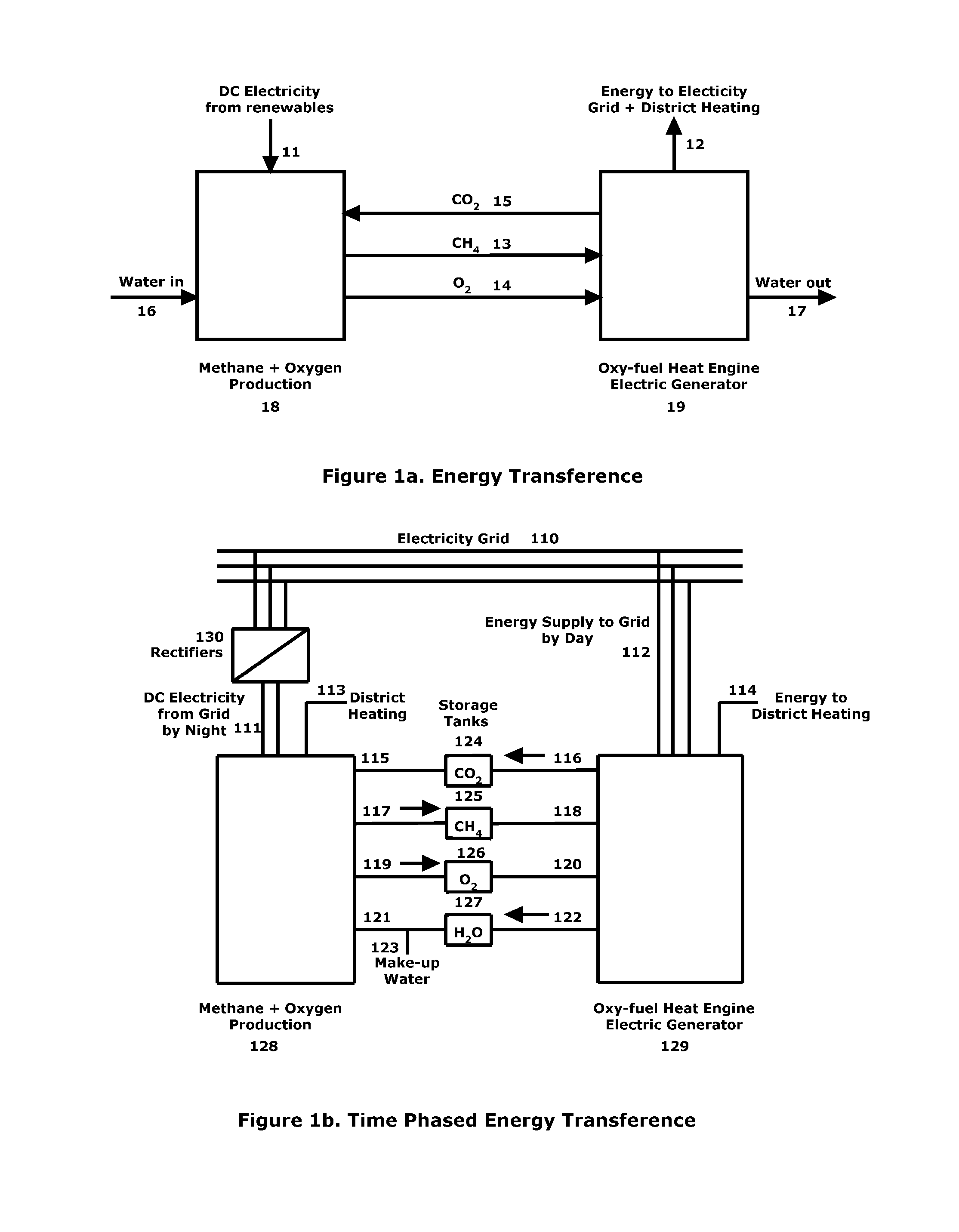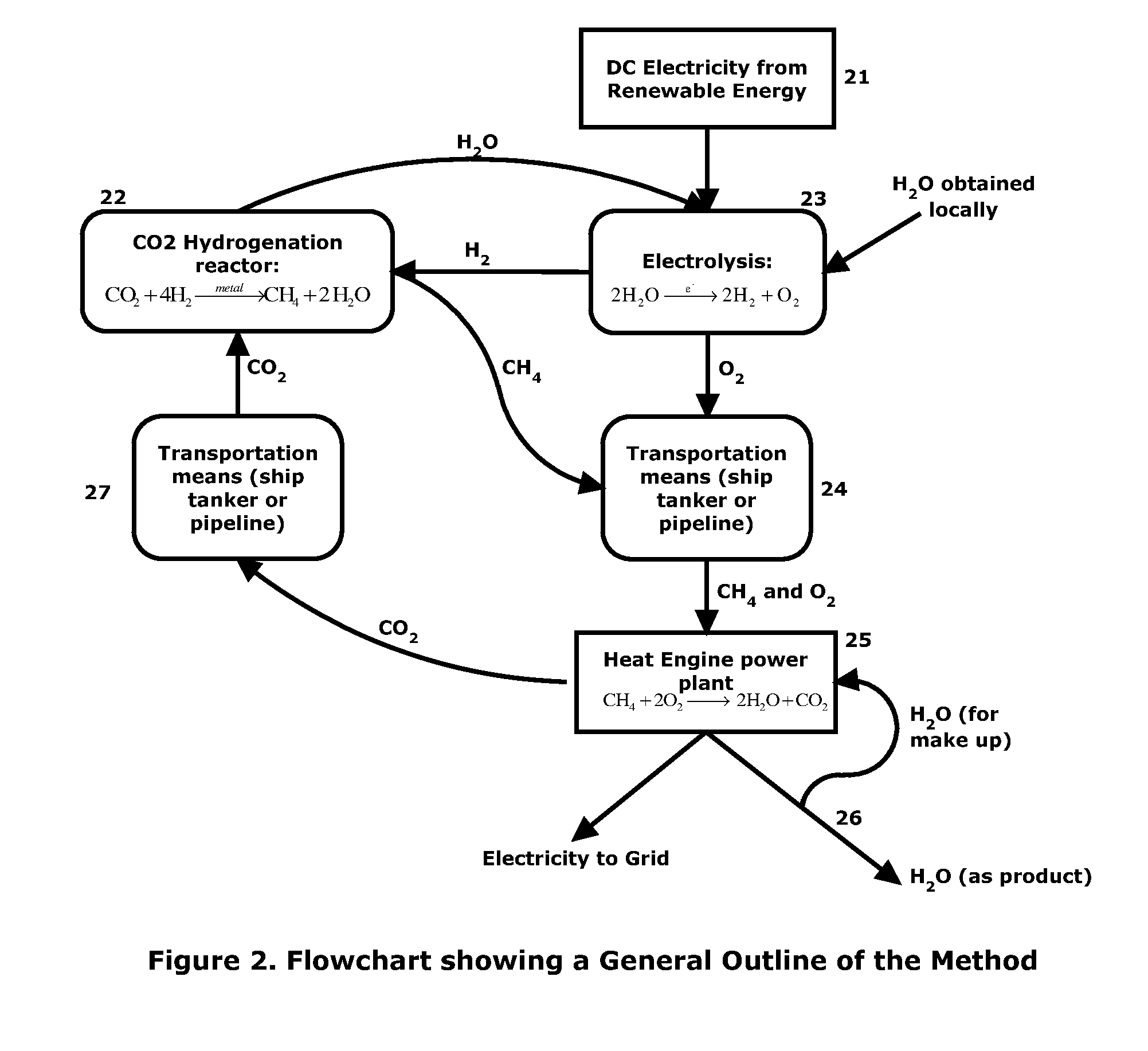Methods and systems for energy conversion and generation
a technology of energy conversion and energy generation, applied in the direction of electrochemical generators, liquid hydrocarbon mixture production, electrical apparatus, etc., can solve the problems of inability to meet the demand at any particular time, inability to readily store electricity, etc., and achieve the effect of improving efficiency and high efficiency
- Summary
- Abstract
- Description
- Claims
- Application Information
AI Technical Summary
Benefits of technology
Problems solved by technology
Method used
Image
Examples
Embodiment Construction
[0129]Embodiments of the present invention will now be described, by way of example only, with reference to the accompanying drawings in which:
[0130]FIG. 1a shows a schematic diagram of energy transfer according to the present invention and FIG. 1b shows a particular embodiment of the invention in which time-phased energy transfer is conducted.
[0131]FIG. 2 shows a flow chart of one embodiment of the present invention.
[0132]FIG. 3a shows a schematic representation of an electrolysis chamber.
[0133]FIG. 3b shows a schematic representation of an apparatus for the hydrogenation of carbon dioxide.
[0134]FIG. 4a shows a schematic representation of inputs, take-offs and storage capabilities associated with the present invention.
[0135]FIG. 4b shows a pipe system according to the present invention for transporting products of the present invention.
[0136]FIG. 5 shows a schematic representation of a combined cycle oxy-fuel gas turbine generator with CO2 recovery.
[0137]FIG. 6 shows a combined 2-s...
PUM
| Property | Measurement | Unit |
|---|---|---|
| temperature | aaaaa | aaaaa |
| temperatures | aaaaa | aaaaa |
| temperature | aaaaa | aaaaa |
Abstract
Description
Claims
Application Information
 Login to View More
Login to View More - R&D
- Intellectual Property
- Life Sciences
- Materials
- Tech Scout
- Unparalleled Data Quality
- Higher Quality Content
- 60% Fewer Hallucinations
Browse by: Latest US Patents, China's latest patents, Technical Efficacy Thesaurus, Application Domain, Technology Topic, Popular Technical Reports.
© 2025 PatSnap. All rights reserved.Legal|Privacy policy|Modern Slavery Act Transparency Statement|Sitemap|About US| Contact US: help@patsnap.com



